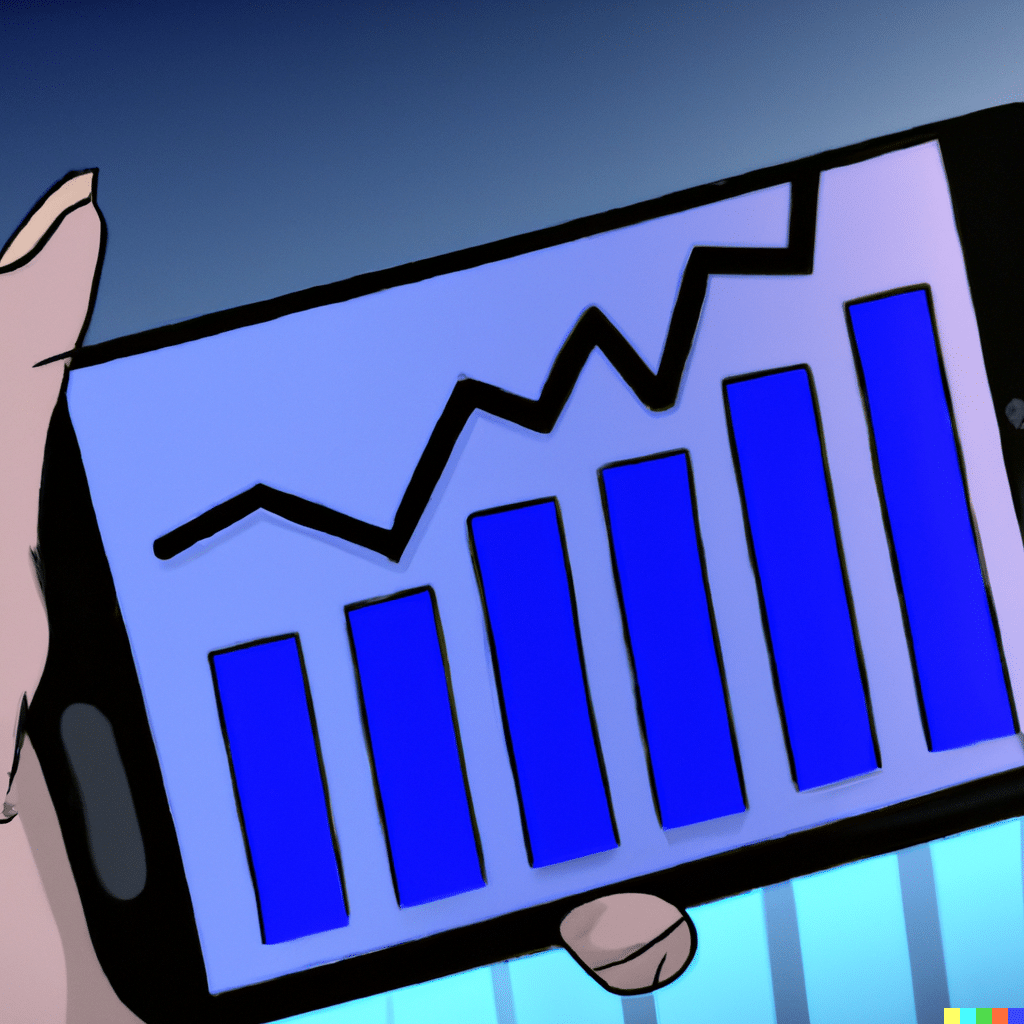The Evolution of Mobile Trading Apps: A Historical Perspective
In today’s fast-paced world, the financial landscape has witnessed a remarkable transformation, largely driven by technological innovations. One such innovation that has revolutionised the way people trade and invest in financial markets is the advent of mobile trading apps. These apps have become a game-changer, empowering investors to trade conveniently and efficiently from the palm of their hands. In this article, we look into the historical evolution of mobile trading apps, exploring their inception, growth, and impact on the financial industry.

The Inception of Mobile Trading Apps
Mobile trading apps had humble beginnings, rooted in the early 2000s when mobile technology was taking its first steps towards prominence. Financial institutions and brokerage firms began to explore the potential of providing trading services through mobile devices. However, the technology at the time was limited, and the concept was still in its nascent stage.
The Rise of Smartphones and App Stores
The real breakthrough for mobile trading apps came with the rise of smartphones and the introduction of app stores. Apple’s App Store, launched in 2008, and later followed by Google Play, opened new avenues for developers to create user-friendly, feature-rich trading applications. This allowed users to access a wide range of financial instruments and markets directly from their smartphones.
The Game-Changing Impact
The proliferation of mobile trading apps brought about a democratisation of financial markets. It enabled individuals from all walks of life to participate in trading and investing, breaking down barriers that were once dominated by large institutions. Suddenly, trading became accessible to anyone with a smartphone and an internet connection.
Key Features of Early Mobile Trading Apps
Early mobile trading apps were relatively basic compared to the sophisticated platforms we have today. They typically provided real-time market data, basic charting tools, and the ability to execute trades. As mobile devices evolved, these apps started incorporating more advanced features like technical indicators, news feeds, and portfolio tracking.
Mobile Trading Apps and the Financial Crisis
The global financial crisis of 2008-2009 served as a litmus test for mobile trading apps. During this tumultuous period, investors sought ways to stay informed and manage their investments on-the-go. Mobile trading apps proved their resilience by providing a lifeline to investors during market turmoil.
The Advent of Social Trading
As mobile trading apps continued to evolve, a new trend emerged – social trading. This innovative concept allowed users to follow and mimic the trades of experienced investors. Social trading platforms integrated social networking elements, enabling users to discuss strategies, share insights, and collaborate with a community of traders.
Advancements in Security and Reliability
With the growing popularity of mobile trading apps, concerns about security and reliability surfaced. App developers and financial institutions invested heavily in enhancing security measures, employing encryption and multi-factor authentication to safeguard user data and transactions. These advancements significantly boosted user confidence in mobile trading apps.
Expanding into Cryptocurrency Markets
As the world witnessed the rise of cryptocurrencies, mobile trading apps swiftly adapted to accommodate these digital assets. Cryptocurrency trading became an integral part of these apps, attracting a new generation of traders and investors who sought exposure to the digital currency markets.
The Era of Robo-Advisors
Another significant development in the evolution of mobile trading apps was the integration of robo-advisors. Robo-advisors are automated platforms that provide personalised investment advice based on algorithms and user preferences. This integration brought a new level of convenience and sophistication to the world of mobile trading.
AI-Powered Trading Algorithms
In recent years, mobile trading apps have harnessed the power of artificial intelligence to offer advanced trading algorithms. These algorithms analyse vast amounts of data, identify patterns, and execute trades based on market trends. AI-powered trading has the potential to enhance trading strategies and improve overall returns.
The Impact of Mobile Trading Apps on Traditional Brokerages
The rise of mobile trading apps has disrupted the traditional brokerage industry. Traditional brokerages were once seen as the only gateway to financial markets. However, mobile trading apps provided a more cost-effective and user-friendly alternative, causing a shift in the industry dynamics.
Regulatory Challenges and Adaptations
As mobile trading apps gained prominence, they also attracted the attention of regulators. Ensuring compliance with financial regulations and investor protection became a priority for app developers and financial institutions. Striking a balance between innovation and adherence to rules has been an ongoing challenge.
Mobile Trading Apps: The Future of Finance
Looking ahead, mobile trading apps are set to continue their transformative journey. With ongoing advancements in technology, we can expect even more sophisticated features, seamless user experiences, and further integration of artificial intelligence. The future of finance is undeniably mobile.
FAQs
Mobile trading apps have revolutionised the financial industry, making trading and investing accessible to a wider audience, while providing convenience and real-time access to financial markets.
Yes, mobile trading apps by regulated brokers employ advanced security measures like encryption and multi-factor authentication to ensure the safety of user data and transactions.
Yes, many mobile trading apps now offer cryptocurrency trading as part of their services.
Mobile trading apps have disrupted traditional brokerages by offering a more cost-effective and user-friendly alternative for accessing financial markets.
Robo-advisors are automated platforms that use algorithms to provide personalised investment advice based on user preferences and market analysis.
Conclusion
The evolution of mobile trading apps has been nothing short of extraordinary. From their humble beginnings to becoming powerful tools that empower individuals in the world of finance, mobile trading apps have left an indelible mark on the financial industry. With their ever-increasing capabilities and user-friendly interfaces, these apps are reshaping the way we trade and invest. As we move forward, the future of finance is undoubtedly mobile, and mobile trading apps will continue to play a pivotal role in shaping it.